Isabella Fischer's Blog: The Mdantsane Way, page 12
October 16, 2012
Every Face A Story And A Life
The People Of Mdantsane. Every Face Has A Story To Tell And Behind Every Story Stands A Life.
http://feeds.feedburner.com/blogspot/...

Published on October 16, 2012 08:34
October 15, 2012
This Is Also Mdantsane

Property prices in Mdantsane have sky rocketed over the last five years. Mdantsane is given itself a definite face lift. Property agents like Xoliswa Tini and ASAP have become complete success stories in Town.
" I absolutely love it here", somebody said, " I would always prefer to buy here than in town or in the other suburbs.'

Beautiul Detail in N.U.7

House have become more individual, they have become an expression of their owners taste.

When foreign visitors from other countries are taken to the township for the first time they are often stunned by the uniformity of the houses and the streets. And this is true! Unfortunately in 1994 the government continued to use a very similar cluster lay out for their housing programmes as the Apartheid system did when they built the townships in the first place in the 1960's. For the new government the goal was to construct as many houses as possible in the shortest time for millions of people with no adequate housing.
To implement more elaborate, sustainable and modern housing schemes with integrated parks, play grounds for kids and green areas asks for more thinking and for more reflection, a more thorough thought through planning and demands skilled architects and developers.
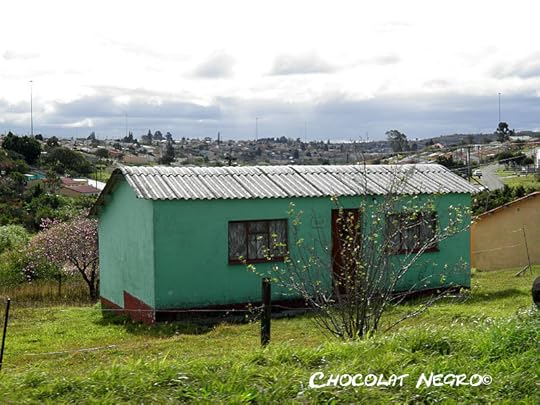
Four or five years ago you could buy a standard two or three bedroom house for 30.000 to 50.000 Rand. And apparently ten years ago you could get property in Mdantsane for 10.000 to 20.000 Rand. Today you have to dig deeper in your pocket to buy a house like the one in the picture. It will cost you not less than 180.000 Rand but prices can go up ad high as 300.000 Rand, depending on the area.

But things are changing. There is turn to individualism that can be seen everywhere.
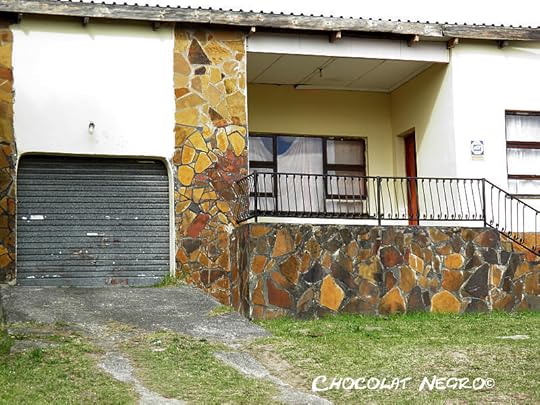
Natural Mosaic Stone Wall in N.U 7

http://feeds.feedburner.com/blogspot/...

Published on October 15, 2012 23:10
October 14, 2012
Ubobhalekaya by the Zambezi Marimbas
Enjoy the track! It is one of our favourites! We have researched this Marimbaphone Orchestra called "The Zambezi Marimbas" but we could not find any information about them. This old recording is an example of the traditional African music played by the many talented and impressive African music orchestras. Xylophone music was played all over Southern Africa in the 1960's. It is still a very popular type of music today.
Xylophone or Marimbaphone music, in Mozambique called Chopi music is a very sophisticated type of African music. The orchestras consist often of large number of players and dancers.
With the courtesy of the East London Museum we are publishing two pictures of Chopi orchestras playing in Mozambique. The photos were taken by Hugh Tracey, the founder of ILAM - the International Library of African Music. His life's work is one of our greatest inspirations.

IMAGE BY HUGH TRACEY, ILAM

IMAGE BY HUGH TRACEY, ILAM
http://feeds.feedburner.com/blogspot/...

Published on October 14, 2012 23:16
October 12, 2012
The Origin Of Mdantsane
The Establishment of Mdantsane As A Bantu Residential Area in 1962


MDANTSANE TODAY. The idea was born in 1962
We have done quite some research on the origin and establishment of Mdantsane. The History of Mdantsane is a topic that interests us a lot and we would like to enable our readers to take a look back into the past and understand the origin of Mdantsane as a residential area that has developed into the second biggest township in South Africa.
What we know is that Mdantsane was established in 1962 as a so called Bantu Residential Area. But fact is there is very little documentation about the development of this area in 1962 or earlier.
We have been searching for quite a while for old documents, photos, maps and other useful information but always with the same outcome. NADA! This was also a our reason for the establishment of this online magazine The Mdantsane Way.
We paid a visit to the East London Museum the other day and had planned to spent a whole day there searching their archives. What was handed over to us was one folder approximately 10 cm thick. Not much here either!
But our visit was not in vain. The folder contained three documents, consisting of notes from the proceedings of a meeting with the deputy-minister of Bantu Administration and Development regarding the proposed development of Mdantsane as a Bantu Residential area dating back to the 13th of March 1962.
In 1962 the idea of Mdantsane was born. The notes give us a very good idea of the complex and complicated discussion that had taken place at the time.
Townships were established in strategic positions to bigger cities with the purpose in mind to serve as a labour pool for so called Industrial Development Sites. People were removed from other locations to live there and commute to the cities for work.
We are publishing here with the East London Museum's permission extracts of a meeting that took place 52 years ago and that determined the future of Mdantsane at the time. We think that you might find this as interesting and enlightening as we did.
The participants in the meeting were as follows:
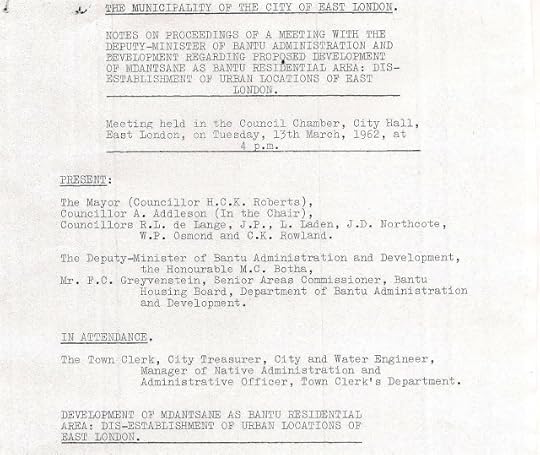
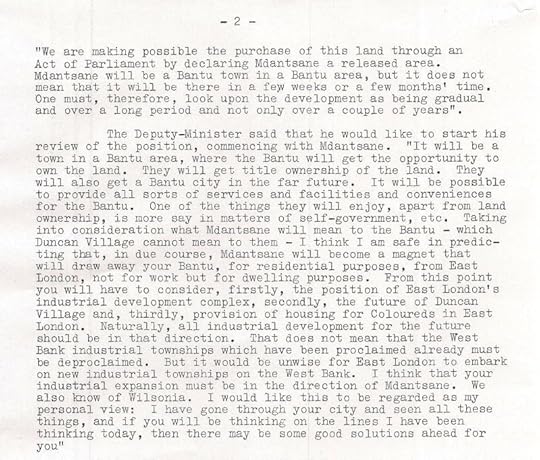

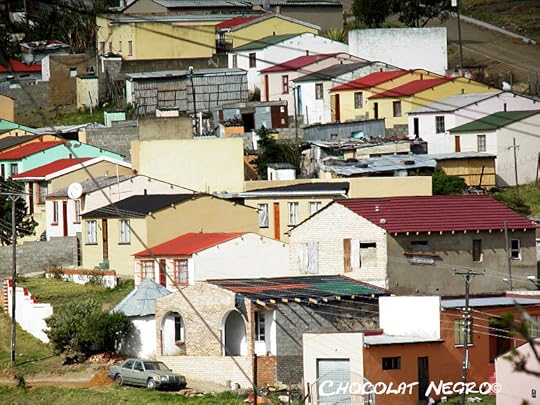
MDANTSANE DEVELOPED INTO SECOND BIGGEST TOWNSHIP IN SOUTH AFRICA, BORN IN 1962
http://feeds.feedburner.com/blogspot/...

Published on October 12, 2012 09:36
October 9, 2012
The Daily Necessities Are Hard To Secure
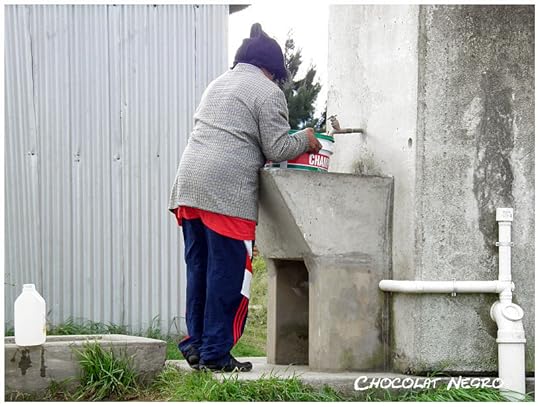
The daily necessities in Mdantsane are still not guaranteed and are hard to get whilst we reach the end of the second decade of South Africa's independance.
The water and sanitation situation is a very challenging one to deal with. The number of households in Mdantsane has grown tremendously over the years and there has been a great influx of people from the rural areas as well.
And with so many additional households, many of them informal, the pressure on the water pumps and water points reaches critical levels. We are talking about public water pumps and water pumps outside the compunds. With low pressure the
water becomes difficult to get and sometimes only sparse amounts are already available
to each household. Maintenance is another problem.

The water is used for everything from cleaning
clothes, cooking, drinking, bathing, and cleaning the house. Having very
little water accessible to each section makes it very hard to get
enough water for a day per household. There are attempts to improve this situation through modernizing the
main water supply system and to add more pumps in each section of the township.
But still many hoseholds do not have water taps in side their house which means " keep a bucket close by" because the water has to be fetched.
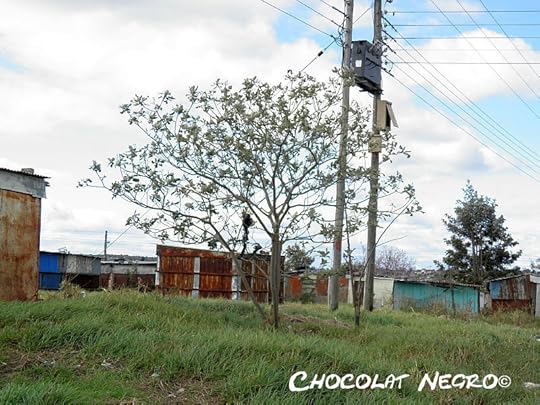
As you drive through the streets, not only the streets of Mdantsane but of every township in South Africa, it is hard not to see the
overload of electrical wires strung from the trees leading to the only
power box in a section. Hundreds of wires come from one power box
because the residents of the area were not given access to the
electricity. So illegal and sometimes dangerous connections were set up because people do need electricity.
Every house in the
area has a wire coming out of it and every wire is known by the owner
in order to fix problems as soon as they arise. The municipality is tearing down these wire frequently but they are back up the next day.
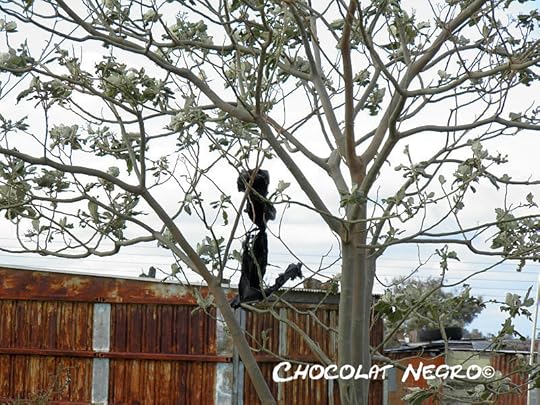
All this shows us that service delivery has not been the Government's strength
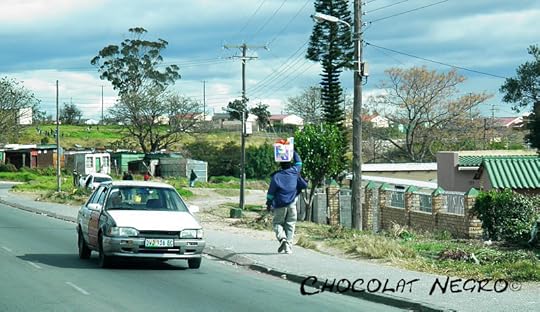
Transport? Let's leave this for another time. If you have to go somewhere you have to walk in many cases and the walk can be a long one.
But still in the face of all those atrocities and poverty, there is so much heartfelt friendliness in Mdantsane.
They are simply THE HEROES OF DAILY LIFE!
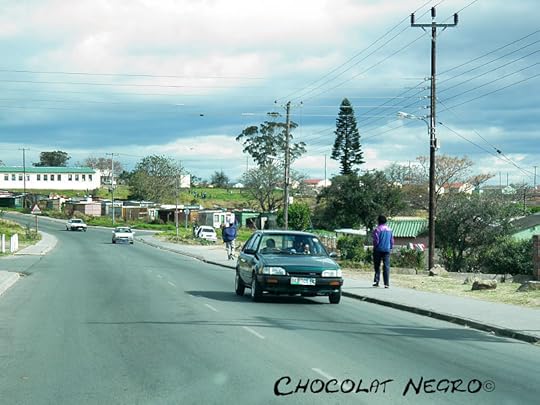
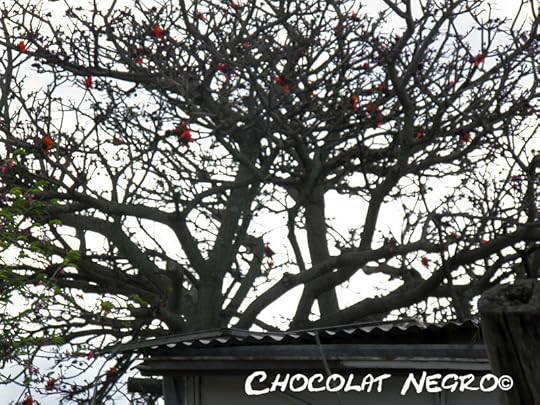
http://feeds.feedburner.com/blogspot/...

Published on October 09, 2012 22:57
Living On Wheels
Published on October 09, 2012 02:38
October 5, 2012
Under The Boardwalk

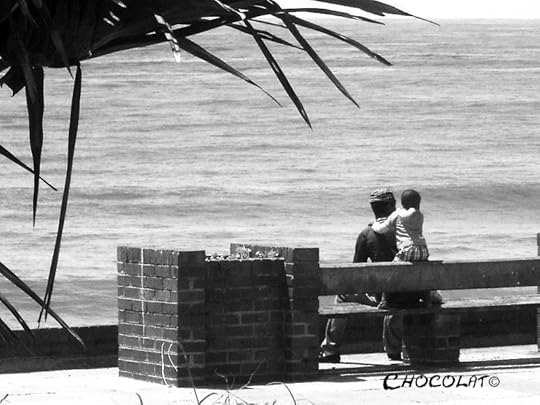
Over a year ago we posted two images on our other website "la vie est belle souvent" When you post an article or photos you never know entirely what reaction you will get from the readers. But the two images have enchanted and were love by thousands of people all over the world. And still after a year they are tweeted, re-tweeted and shared on the net. We love them too.
We are sharing them with you on The Mdantsane Way even though they are not directly related to Mdantsane. The Esplanade or beachfront in East London is however a very popular destination for many especially on the week-end and during holidays. It's a place to relax, linger, get take-aways, watch the activities out at sea, listen to music in your car and just spend time with the people you love, like this young father with his son!
A moment, a street photographer dreams off. He was entirely dedicated to his son, there was no hurry, no rush, no pushing and no we-have-to-go-somewhere-now-now. It was a man to man, a father and son moment and you can feel the peace of this morning shared together in the images long after it is gone.
Moments like these are the reason why we believe in the power of a positive journalism. There is so much love in South Africa. Let's show the love to the world, not the hate!
http://feeds.feedburner.com/blogspot/...

Published on October 05, 2012 07:32
United We Stand
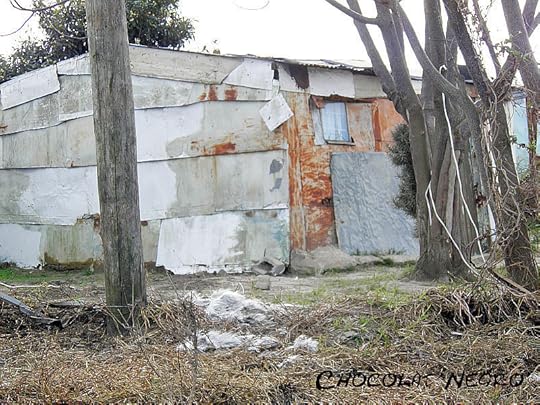
This shack in an informal settlement part of Mdantsane is made out of hundreds of pieces of corrugated iron joined together. United like this "they stand" and provide a home for a family.
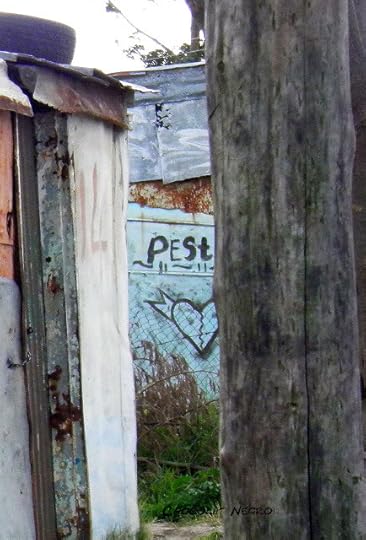
Within the informal settlements that sometimes are entities on their own but often also are part of a bigger township, the communities face many troubling issues.
Most
often the homes are built on lands that are not owned by the occupier so they are considered illegal constructions.
Since the houses are not there with the government’s permission they
most likely do not have the proper services needed. Without the proper
services, such as sewage, electricity, roads, and clean water, life
becomes very difficult for the residents.
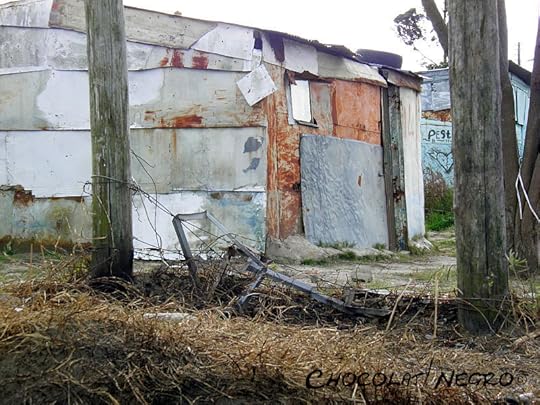
http://feeds.feedburner.com/blogspot/...

Published on October 05, 2012 03:50
October 3, 2012
HI-WAY Sellers Need Patience

One of the most beautiful things the African continent has to offer are the traditional African markets. Although more developped than the rest of the continent South Africa still has a lot of them! Hi-Way in Mdantsane is one of them. But times are hard for the sellers. The global recession has not spared South Africa. The smile is still there on the faces but life has definitely changed for the worse for many!
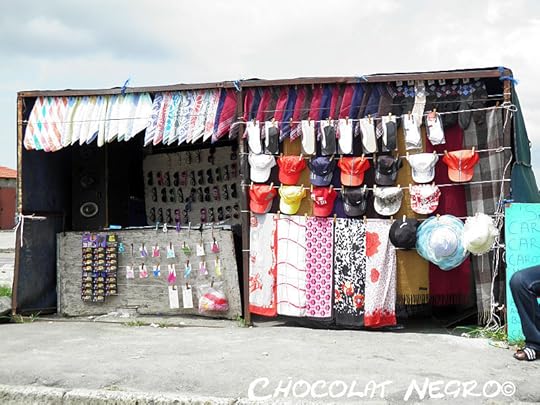
After the morning buzz and after preparing the stalls and displaying the merchandise, comes the wait. Sometimes a very long wait!

"Nobody buys anything these days", one seller said. Only the hair-salons are still doing ok. I am thinking of changing my line of busniess. But even they suffer. And I don't know really about hair!"
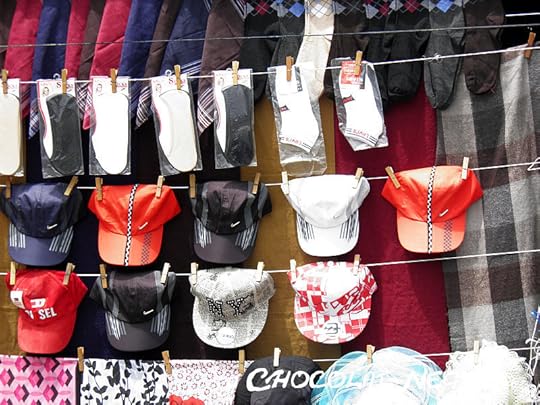
This seems to be a fact and the cheap and low quality Chinese imports, flooding the country from every angle do not help either. Now everybody has the same things on offer.
While relations with China are intensified and China is getting a tighter grip on Africa more and more traditional craft techniques disappear and die, because the products are too expensive and the producers can not find ways to sell them in this global economy on their own.

So for many the only thing to do is wait, and continue doing the things they already do!
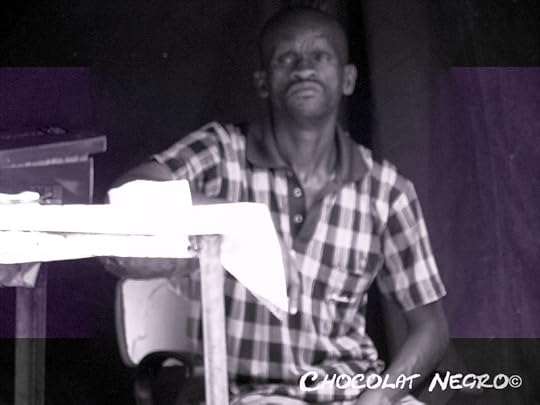
http://feeds.feedburner.com/blogspot/...

Published on October 03, 2012 23:05
Moya - The Wind - Sung By Letta Mbulu
Moya means the wind in Xhosa. On this old vinyl recording, that we have found in East London Moya is sung by Letta Mbulu.
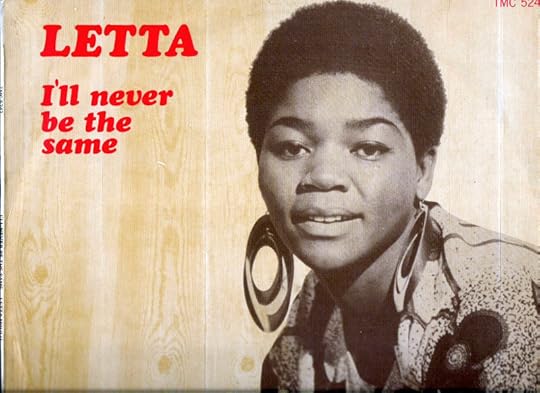
Originally this song was written and performed by Miriam Makeba. But we also love this version. Recorded in 1973 on Tamla Motown label. The cover is also great, Letta showing off her true African NATURAL beauty.
We have been collecting out of press records and record labels of the African Diaspora for many years. And we have found a great number of outstanding LP's in East London and the Eastern Cape. We did promise you more music and it will come. With time we will upload more tracks.
With the sound cloud player you have to play the song one time to properly uplaod it (same story like on youtube). The second time it will run through smoothly. We have done an optimal cleaning but you might have to adjust bass and other settings on your side, depending on the sound quality you get.
Moya by Letta by chocolatnegro
http://feeds.feedburner.com/blogspot/...


Originally this song was written and performed by Miriam Makeba. But we also love this version. Recorded in 1973 on Tamla Motown label. The cover is also great, Letta showing off her true African NATURAL beauty.
We have been collecting out of press records and record labels of the African Diaspora for many years. And we have found a great number of outstanding LP's in East London and the Eastern Cape. We did promise you more music and it will come. With time we will upload more tracks.
With the sound cloud player you have to play the song one time to properly uplaod it (same story like on youtube). The second time it will run through smoothly. We have done an optimal cleaning but you might have to adjust bass and other settings on your side, depending on the sound quality you get.
Moya by Letta by chocolatnegro
http://feeds.feedburner.com/blogspot/...

Published on October 03, 2012 08:52





